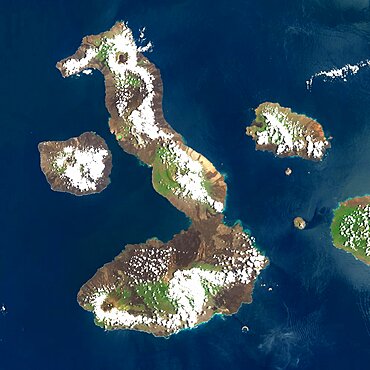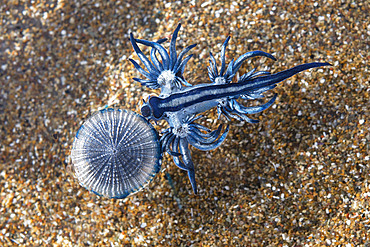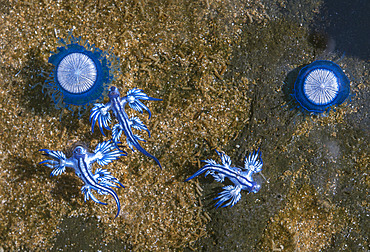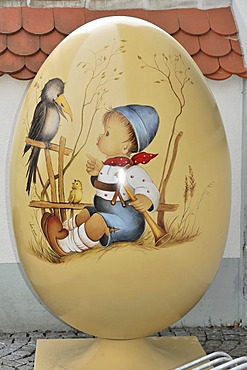Recent searches
Loading...
1383-19 - A male Sable - Hippotragus niger - it's scimitar shaped horns sweeping upwards and backwards reach a length of 150 cm and can protect him from predators jumping on his back.
1348-4557 - Galapagos Volcanoes, Ecuador, True Colour Satellite Image. Galapagos Archipelago, Ecuador, true colour satellite image. Galapagos Archipelago is situated 1000 km West of the Ecuadorian coast. The largest and most volcanically active island in the archipelago is Isabela (6 volcanoes). On the left of image, the island of Fernandina (one volcano). Image taken on 16 March 2001 using LANDSAT data. Print size 30 x 30 cm.
1348-4559 - Augustine Volcano, Alaska, Usa, True Colour Satellite Image. Augustine Volcano, Alaska, true colour satellite image. Augustine is a volcano 1227 m high conical-shaped island stratovolcano located in Alaska's Cook Inlet. Image taken on 16 August 2000 using LANDSAT data. Print size 30 x 30 cm.
1348-4544 - Ardoukoba Volcano, Djibouti, True Colour Satellite Image. Ardoukoba, Djibouti, true colour satellite image. Ardoukoba is a volcano located close to Assal Lake in Djibouti. Image taken on 13 May 2000 using LANDSAT data. Print size 30 x 30 cm.
860-289959 - Red atlantic ref lobster (Enoplometopus antillensis). Carapace about 15 cm long with circular patterns on each side of the head. It lives in dimly lit environments dome crevices, hollows and caves. Marine invertebrates of the Canary Islands, Tenerife.
860-289962 - Blue Dragon (Glaucus atlanticus). Small slug that measures only about 2 cm and is generally associated with the Portuguese man of war (Physalia physalis), although it also usually appears in intertidal pools. Marine invertebrates of the Canary Islands, Tenerife.
860-290260 - BLUE DRAGON (Glaucus atlanticus). Small slug that measures only about 2 cm and is generally associated with the Portuguese man of war (Physalia physalis), although it also usually appears in intertidal pools. Marine invertebrates of the Canary Islands, Tenerife.
860-289963 - Blue Dragon (Glaucus atlanticus) hanging. Small slug that measures only about 2 cm and is generally associated with the Portuguese man of war (Physalia physalis), although it also usually appears in intertidal pools. Marine invertebrates of the Canary Islands, Tenerife.
860-290259 - BLUE DRAGON (Glaucus atlanticus). A small peacic slug that measures only about 2 cm and is generally associated with the Portuguese frigatebird (Physalia physalis) or the blue button (Porpita porpita) on which it feeds. They can also appear in intertidal pools. Marine invertebrates of the Canary Islands, Tenerife.
1350-2072 - Aztec Cihuateotl. Mexico, Aztec. Late 15th-early 16th century. Stone. Metropolitan Museum of Art in New York City. 82nd Street Manhattan New USA
465-3206 - Juvenile cuttlefish (Sepia latimanus) less than 3 cm long shelters in the arms of a crinoid (featherstar), Celebes Sea, Sabah, Malaysia, Southeast Asia, Asia
465-3204 - Giant Frogfish (Antennarius commersonii) can grow to 30 cm and is commonly encountered by divers, Celebes Sea, Sabah, Malaysia, Southeast Asia, Asia
832-80224 - Painted egg at an entrance, about 140 cm high, Steinhausen, Baden-Wuerttemberg, Germany, Europe
747-1423 - Architectural detail of a culvert exit approximately 30 cm high, under the wall of the AD 130 Cilurnum - Chesters Roman Fort, Chollerford, Northumbria National Park, England, United Kingdom, Europe
857-65520 - A cowboy employee of the CM guest ranch near Dubois, Wyoming, takes a coffee break.
979-7139 - Chinstrap penguin (Pygoscelis antarctica) chick head detail at colony on Useful Island near the Antarctic Peninsula. There are an estimated 2 million breeding pairs of chinstrap penguins in the Antarctic peninsula region alone, perhaps as many as 7.5 million breeding pairs in all of Antarctica. Their name derives from the narrow black band under their heads which makes it appear as if they are wearing black helmets, making them one of the most easily identified types of penguin. Other names for them are "Ringed Penguins", "Bearded Penguins", and "Stonecracker Penguins" due to their harsh call. They grow to 68 cm (27 in). The average adult weight of a Chinstrap Penguin is 4.5 kg (10 lbs). Weight can range from 3 to 6 kg (6.6-13.2 lbs), with males being slightly larger and weight varying based on where the penguin is in the breeding cycle. Their diet consists of krill, shrimp, and fish. On land they build circular nests from stones, and lay two eggs, which are incubated by both the male and the female for shifts of five to ten days. They can also breed on icebergs, though they prefer non-icy conditions. The chicks hatch after about 35 days, and have fluffy gray backs and white fronts. The chicks stay in the nest for 20?30 days before they go to join a creche. At around 50?60 days old, they moult, gaining their adult plumage and go to sea. The Chinstrap Penguin was first described by German naturalist Forster in 1781. Its specific epithet was often seen as antarctica, however a 2002 review determined the genus Pygoscelis was masculine, and hence the correct binomial name is Pygoscelis antarcticus.
979-4423 - Adult Southern Rockhopper Penguins (Eudyptes chrysocome chrysocome) in the Falkland Islands. This is the smallest yellow-crested, black-and-white penguin in the genus Eudyptes. It reaches a length of 45-58 cm (18-23 in) and typically weighs 2-3.4 kg (4.4-7.5 lb), although there are records of exceptionally large rockhoppers weighing 5 kg (11 lbs). Their common name refers to the fact that unlike many other penguins which negotiate obstacles by sliding on their bellies or by awkward climbing using their flipper-like wings as aid, Rockhoppers will try to jump over boulders and across cracks. This behavior is by no means unique to this species however - at least the other "crested" penguins of the genus Eudyptes hop around rocks too. Southern Rockhopper Penguins have a global population of roughly 1 million pairs, perhaps a bit more. About two-thirds of the global population belongs to E. c. chrysocome which breeds on the Falkland Islands and on islands off Argentina and southern Chile. The Southern Rockhopper Penguin is classified as Vulnerable species by the IUCN.
823-392 - Dark Field Light Micrograph of a male Mosquito (Anopheles sp.), magnification x 65 (if print A4 size: 29.7 cm wide)
29-69 - Blisters measuring about 10 cm across in boiling mud pool, Mud volcano, Yellowstone National Park, UNESCO World Heritage Site, Wyoming, United States of America (U.S.A.), North America
You reached the end of search results




















